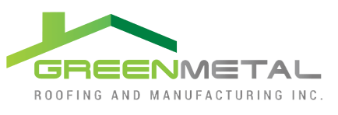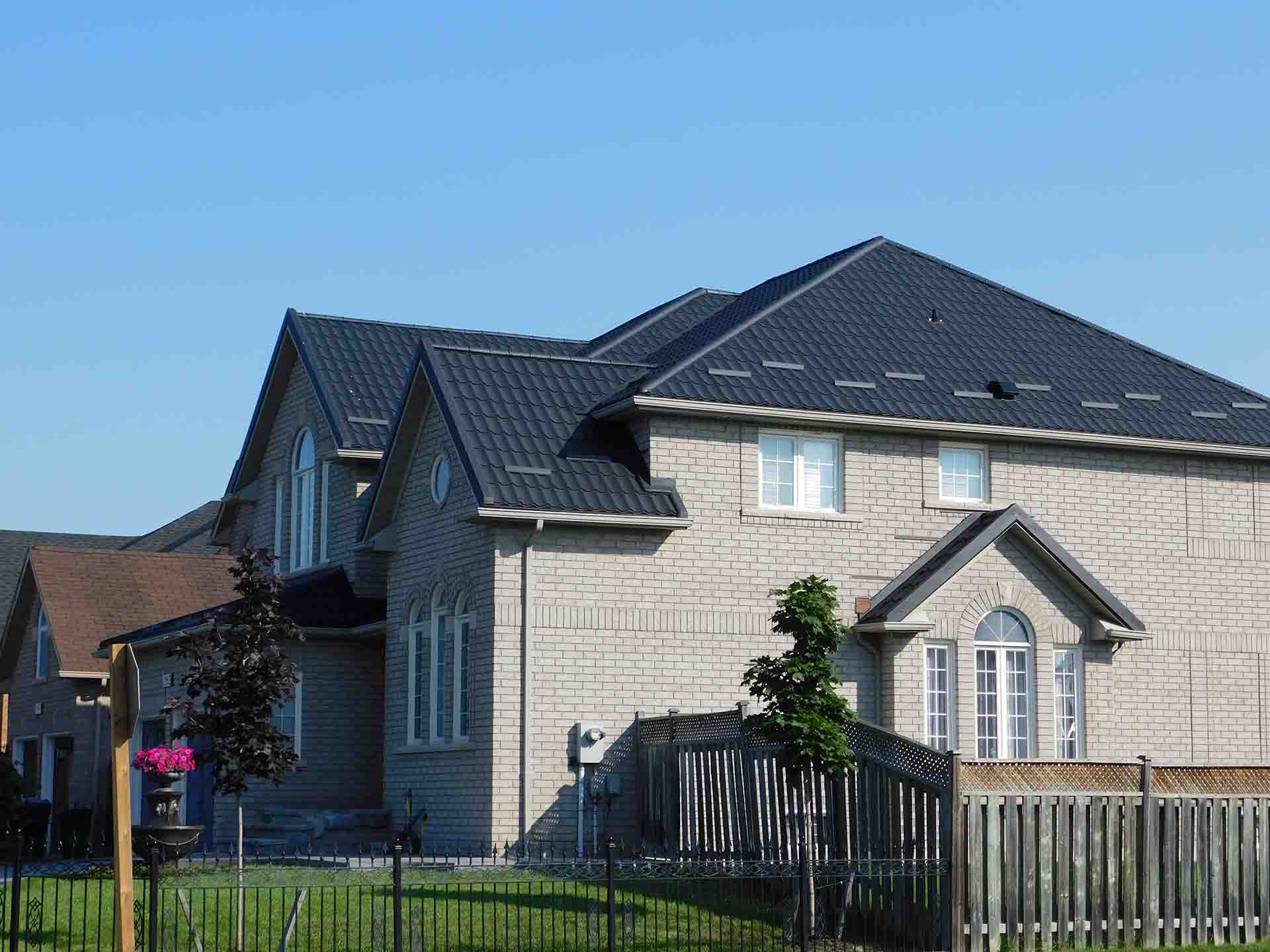Metal roofing has been gaining popularity for roof replacement in residential homes, commercial buildings, agricultural buildings, and even cottages. It is becoming a more viable and economical option for many homeowners. Before metal roofing became more accessible, traditional shingle asphalt roof was the main option. With the growing popularity and the added benefits of metal roofing, it is becoming a regular sight to see a home with a metal roof. Here are 10 things you should know about metal roofing and why it is a great option:
1. Metal roofing provides long-term value
Metal roofs have a lifespan that is two to three times longer than traditional roofing materials, like asphalt, tile, and wood. This is important to note when considering the long-term value of a new roof.
Although they are less expensive to install, asphalt shingle roofs only last 12 to 20 years before needing to be replaced. When exposed to the weather on a regular basis, the lifespan might be considerably shorter, making a metal roof much more cost-effective in the long run.
Even if a homeowner does not intend to stay in their home for decades there are added benefits of a metal roof. Metal roofing is energy efficient which can directly relate to lower heating and cooling costs. Metal roofing can also increase your property value and curb appeal.
2. Metal roofing is energy efficient
During the peak summer months, metal roofs keep 10 to 15 degrees cooler than other roofing materials. Light-colored metal roofs naturally reflect more of the sun’s energy than dark-colored metal roofs. New heat-reflective paint choices are also available, allowing dark-colored metal roofs to still meet Energy Star criteria. Heat reflection reductions are useful in places where cooling costs exceed expenses.
3. Metal roofing works well in the winter
Metal roofing is a great option for the winter months because it is the perfect waterslide and its insulation and heat preservation properties. Metal and steel roofs remain smooth and even for their entire lifespan. This characteristic helps metal roofing slide water and snow right off which will ensure you avoid a leaky roof.
During the winter metal roofing is ideal for reducing and eliminating roof ice dams. Ice dams can cause thousands of dollars in damage to any roof. However, a metal roof creates a ventilated space that stops ice dams from forming and snow melts uniformly and falls right off.
An important feature that adds quality to metal roofing is that they are great insulators. The fact that metal roofing allows water and snow to easily slide off makes them ideal for insulation and preserving heat. As mentioned earlier, they are energy-efficient and can save you money on heating bills.
4. Metal roofing can be damaged by severe hail
Metal roofs may outlast asphalt shingles and other types of roofing materials, but they are not indestructible. Large hail is a dangerous weather condition for any type of roof. Aluminum and copper roofs are prone to denting when hailstones reach golf-ball size. Steel, on the other hand, performs better in hailstorms and it is a material to consider if you live in a location where severe hailstorms occur regularly. However, when hail reaches massive sizes it can damage any roofing material, including asphalt. Metal roofs are rarely affected by hailstones the size of a pea or even a penny.
5. Metal roofing can be installed over existing roofs
If your local building codes allow it, metal roofing can be placed over your existing roof without taking off the shingles. While shingle removal is the recommended method, tear-off is inconvenient and increases the cost of the project.
Even though it saves costs, trapped water vapor is a possible issue with this kind of installation. Moisture can accumulate between metal roofing and the original roofing, causing mold and decay. Professional roofers, on the other hand, can build a ventilated metal roof, which avoids this possible issue.
Before installing a metal roof directly over existing shingles, check with your local building codes. Some regions may require complete tear-off when installing a new roof.
6. Metal roofing does not attract lightning
A metal roof is no more open to lightning strikes than any other type of roofing. Lightning is more likely to strike the tallest object in the region, such as a chimney or tree, than a metal roof. If lightning somehow strikes a metal roof, it will not catch fire because metal is a non-combustible material. In this situation, a metal roof would be preferable over an asphalt roof, which would catch fire if struck by lightning.
7. Metal roofing is impervious to fire, rot, and insect damage
Metal roofs are extremely robust, preventing rust and insect damage. They are also fireproof. This is a common feature in locations prone to wildfires. A fire-resistant roof, on the other hand, is a useful preventative feature for any home to have in the event that your neighbor’s home catches fire. Wind-blown embers will be kept from falling on your house. Termites and insects cannot devour metal material, which is another protective aspect of roofing systems. Lastly, metal roofs are sealed in such a way that mildew and rot cannot form which is why proper installation is vital to the performance of a metal roof.
8. Metal roofing is just as noisy as asphalt roofing
Metal roofs make the same amount of noise as asphalt shingles when rain or hail falls on them. With proper installation, the noise level of a metal roof is comparable to that of any other roofing material. Metal roofing is normally installed over a sturdy foundation. They all work together as a sound barrier, along with the attic and insulation.
9. Metal roofs are recyclable and environmentally friendly
Metal roofs are frequently composed of 25 to 95 percent recyclable material. Even though metal roofs are incredibly durable, when the time comes to replace them, it is usually accepted at metal recycling centers. Compared to shingle roofs, they may have some recycled material but the vast majority do not. Shingles typically wind up in landfills at the end of their useful life. Metal roofs are an environmentally beneficial roofing alternative.
10. Installation and repair usually require a professional
It is recommended that metal roofing should be installed by professional roofers and should not be done on your own or with a team that does not have experience working with metal roofing material. Metal roofing is often only accessible through a few vendors, and the processes for installation and repair are highly specialized. If you choose metal roofing, you will almost certainly need to call a professional if repairs need to be done or if you have any concerns. However, such issues are uncommon with metal roofs, especially if they have been installed by professional roofers.
Metal roofing offers several advantages to homeowners. They are long-lasting, need less maintenance, and use less energy. In particular, when compared to asphalt shingles. Despite the cost of installing and acquiring materials for a metal roof, the advantages may outweigh the costs. Metal roof elements can also boost the value of your property. When it comes time to replace your roof, metal roofing should be a primary consideration.


